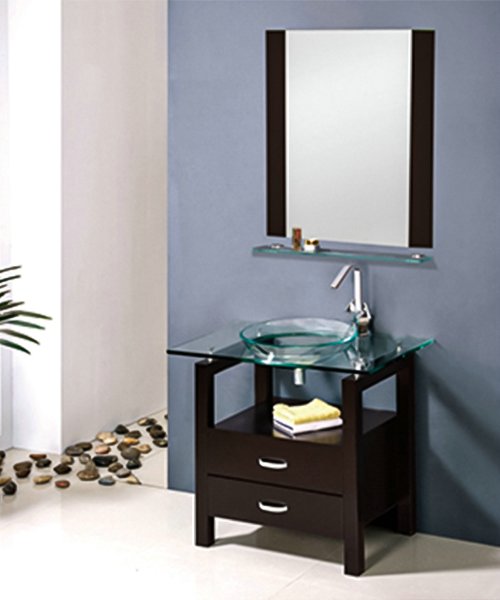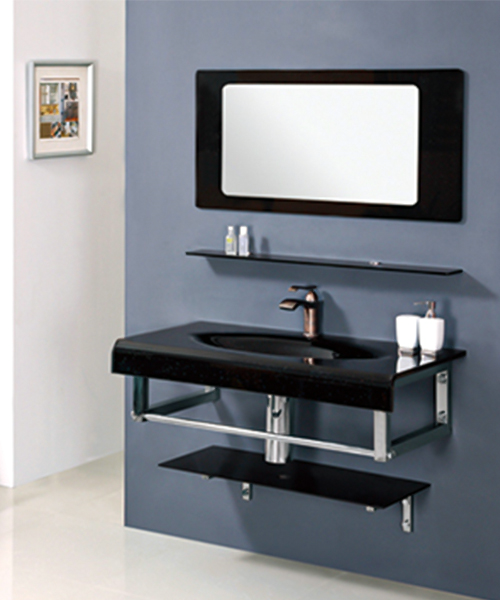1. Enhanced Aesthetic Appeal
Professional polishing and beveled edging significantly elevate the aesthetic value of wall mirrors, making them more than just functional objects but also key elements of interior design. Polishing involves meticulously smoothing out the mirror surface to remove any surface imperfections, smudges, or scratches. This results in a flawless reflective surface that is clear and smooth, which allows for more accurate and detailed reflections. A highly polished mirror also reflects light more effectively, creating a brighter and more open space. This is especially beneficial in smaller or dimly lit rooms where the mirror can play a role in making the space feel larger and more inviting.
Beveled edges add a touch of elegance and refinement to the mirror. By cutting the glass at an angle, beveled edges create a subtle yet sophisticated detail that enhances the overall design. This feature works particularly well with traditional or vintage-style décor, where intricate design details are highly valued. The beveled edges also catch and reflect light in a way that adds a glow or shimmer to the mirror, further increasing its visual appeal. Whether the mirror is placed in a bathroom, entryway, or living room, the combination of professional polishing and beveled edges ensures that the mirror doesn’t just reflect your image but also serves as a captivating centerpiece in the room.
2. Improved Durability and Safety
In addition to enhancing the aesthetic qualities of the mirror, professional polishing and beveled edging contribute to the overall safety and durability of the mirror. When the glass is polished, it not only becomes smoother and more visually appealing, but it also reduces the risk of cracks, chips, or scratches. By ensuring the edges are smooth and well-finished, the polishing process eliminates any jagged areas that could cause injury or damage during handling or installation. The smooth surface also prevents dust and grime from accumulating on rough edges, making it easier to maintain the mirror over time.
Similarly, beveled edges add to the mirror’s durability by softening the glass edges, which are typically the most vulnerable part of the mirror. Without beveling, sharp edges are more likely to chip or break, which can lead to a potential safety hazard, especially in households with children or pets. Beveled edges reduce this risk, providing a much safer product. The beveling process prevents wear and tear at the edges of the mirror, ensuring that the glass stays intact for a longer period, even with frequent use or exposure to minor bumps and accidents. This makes polished, beveled mirrors a safe and reliable choice for busy households or commercial settings.
3. Perfect Fit with Different Interior Styles
Professional polishing and beveled edges are crucial in making wall mirrors adaptable to a wide range of interior design styles. The polished finish creates a clean, smooth surface that works well with contemporary and minimalist designs. Modern, sleek interiors benefit from the simple yet high-end look provided by polished mirrors. A well-polished surface amplifies the visual effects of light in a room, which is an essential element in contemporary design where clean lines and open spaces are emphasized. Polished mirrors also match well with modern furniture and décor items, creating a cohesive, sophisticated look.
On the other hand, beveled edges can bring an element of tradition and elegance to a mirror. Beveled edges evoke a sense of craftsmanship and attention to detail, which works well with vintage, classical, or transitional designs. This feature is often seen in antique-style mirrors or in spaces that aim to combine old-world charm with modern conveniences. Beveled mirrors are versatile and can be paired with a variety of frame types, from ornate gold frames to sleek, minimalistic metallic frames, offering both contemporary and classic appeal. Thus, the combination of polishing and beveling ensures that the mirror will seamlessly fit in various types of spaces, whether in homes, offices, or commercial spaces.
4. Creating a Luxurious and High-Quality Look
One of the most significant benefits of professional polishing and beveled edging is the ability to impart a luxurious, high-end appearance to the mirror. These techniques are typically found in mirrors of higher quality, reflecting a level of craftsmanship that elevates the mirror from a functional object to a piece of art. When the glass is polished, it enhances the reflective properties, creating a mirror surface that is more luminous and eye-catching. This polished surface not only improves the visual clarity of the reflection but also contributes to the overall perception of quality. In contrast to cheaper, poorly finished mirrors that may have imperfections or cloudy surfaces, a professionally polished mirror immediately suggests sophistication and refinement.
Beveled edges enhance this luxurious feel by adding subtle elegance to the mirror. The angled cuts reflect light in unique ways, which can create a soft glow around the mirror’s perimeter, further enhancing its visual appeal. Beveled mirrors are often a key feature in high-end homes, hotels, and spas because they exude a sense of luxury and elegance. The extra attention to detail provided by beveling gives the mirror a timeless quality, ensuring that it remains a visually appealing and functional item for years. Whether placed in a bathroom, foyer, or bedroom, mirrors with polished surfaces and beveled edges make a statement and add value to the space.
5. Increased Value and Longevity
Investing in professionally polished and beveled-edge mirrors not only improves their appearance but also contributes to their long-term durability. A smooth, polished surface is less prone to wear and tear over time. The glass remains clearer and more reflective, making it a practical investment that will continue to perform well for years. Furthermore, because professional polishing removes surface imperfections, it helps prevent the build-up of dirt and grime, making the mirror easier to clean and maintain. This not only helps to preserve its aesthetic quality but also ensures the longevity of the product.
The beveled edges of the mirror also contribute to its durability. By softening the sharp edges of the glass, beveling prevents the glass from cracking or chipping, which can occur when mirrors are subjected to minor bumps or accidents. Beveled mirrors tend to stay intact longer, as the smooth, angled edges are less vulnerable to damage than flat, sharp edges. In addition, these mirrors are often seen as more valuable due to their craftsmanship, which can increase their resale value. This makes polished and beveled-edge mirrors a sound investment for anyone looking for high-quality, long-lasting home décor.
6. Improved Reflection Quality
Professional polishing and beveled edges also have a direct impact on the quality of the mirror’s reflection. A polished surface is crucial for creating a clear, undistorted reflection. Mirrors that have not been properly polished often suffer from imperfections or smudges that can blur or distort reflections. In everyday use, this can be particularly annoying, especially for tasks that require precise reflection, such as grooming or applying makeup. Professional polishing eliminates these issues, providing a clean and smooth surface that enhances the mirror’s functionality.
Similarly, beveled edges contribute to the visual quality of the mirror by adding depth and dimension to the design. The angled cuts catch and reflect light differently than flat edges, creating a soft, radiant glow around the perimeter of the mirror. This effect can enhance the overall lighting in the room, making the space feel brighter and more inviting. In rooms with poor natural lighting, the added light from the beveled edges can help create a more flattering atmosphere, improving the overall lighting effects in the room and making the reflection appear more vibrant and natural.

 English
English Español
Español عربى
عربى











